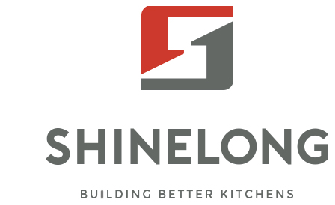What Is a Restaurant Kitchen? Sections, Layouts & Equipment Guide
You may have wondered what goes on in a restaurant's kitchen. It is important to keep the restaurant running and in good order, especially when you are serving guests. The back of house is also responsible for maintaining a consistent quality of meals while handling an enormous amount of cooking tasks. The kitchen is the hub of any hospitality or catering operation. It's where raw ingredients are turned into delicious food and served to guests. Restaurant kitchens are designed to be fast, consistent, clean, and coordinated by multiple staff members.
The kitchen is more than a cooking equipment set, refrigeration equipment, storage, prep zones and a commercial dishwasher. This allows for a continuous, rigorous service. Kitchen planning has a direct impact on productivity, food quality and the overall dining experience. Every minute counts in the kitchen of a restaurant.
What is the secret of this commercial kitchen? This blog will answer some of the most common questions that people have about kitchens in restaurants:
- What are the major sections of a restaurant kitchen?
- What Are the Essentials for a Restaurant Kitchen?
- What is the standard layout of a restaurant's kitchen?
- How to set up a restaurant kitchen that is right for your business?
Understanding How a Restaurant Kitchen Works
Every line of movement in the restaurant kitchen is deliberate, just as it would be with a precision-built clock. The war begins when you step into the kitchen! The staff must first do an inventory check, then prepare the ingredients in designated areas that are cold and dry. The food is then moved to the cooking area, where equipment like combi ovens, pressure fryers commercial, and induction cook ranges are used.
The zones are designed to facilitate this progression: storage at the back, prep in middle, and the hot line facing forward. Equipment is placed in the kitchen to minimize traffic and focus chefs on their work. Kitchen layouts such as the island or assembly line style promote fluid movement, whereas zone-styled kitchens encourage team specialization. Timing, proximity and temperature control are key factors in performance, from mise en place through to final plating. A well-designed kitchen layout not only serves the menu, but also shapes the service rhythm.
What Are the Main Sections of a Restaurant Kitchen?
A well-run restaurant kitchen is more than just stoves and sinks—it's a collection of clearly defined work zones, each playing a specific role in the daily rhythm of foodservice.
Cooking Area
This is the heart of the action—where flames fly and dishes come to life. It includes equipment like ranges, fryers, griddles, ovens, and steamers. Placement matters: cooking stations are often lined up to face the pass for faster service. In busy kitchens, chefs work shoulder-to-shoulder here, so spacing and ventilation are just as important as firepower.
Inventory & Storage
Storage is more than shelving—it's the backbone of kitchen readiness. This section includes dry storage, walk-in coolers, freezers, and secure ingredient racks. In a good setup, ingredients are categorized, labeled, and positioned for quick access to minimize wasted motion during prep and cooking.
Food Prep Area
Between storage and the stove lies the prep zone. This is where raw materials are portioned, cut, marinated, or mixed. It’s fitted with stainless steel worktables, sinks, cutting boards, and access to small appliances like blenders or slicers. Ideally, prep areas are placed close to both the cold storage and cooking line to keep things tight and efficient.
Cleaning & Dishwashing Area
Often tucked in the back but never out of mind, the dishwashing zone handles dirty dishes, cookware, and sanitizing. This area typically includes a three-compartment sink, a commercial dishwasher, and drying racks. Good drainage, separation of clean and dirty zones, and easy access for bussers are key to keeping things flowing.
What Do You Need in a Restaurant Kitchen?
Every efficient restaurant kitchen starts with the right tools. Here’s a list of core equipment commonly found in professional back-of-house setups:
- Commercial Gas Range
- Flat-Top Griddle
- Deep Fryer
- Convection Oven
- Commercial Refrigerator
- Undercounter Freezer
- Prep Table with Undershelves
- Food Processor / Vegetable Cutter
- Salamander Broiler
- Dishwashing Sink or Conveyor Dishwasher
- Exhaust Hood System with Grease Filters
- Hot Holding Cabinet or Bain Marie
From bulk cooking to food safety and plating, each piece plays a role in keeping service smooth, fast, and consistent.
What Is the Typical Layout for a Restaurant Kitchen?
There’s no one-size-fits-all blueprint for kitchen design—but the most successful restaurants choose a layout that matches their service style, team size, and workflow priorities. Here are four commonly used layout types, each with its own advantages:
Assembly Line Layout
Perfect for fast-paced, high-volume kitchens like burger joints or casual chains. Equipment is lined up in the order of cooking steps—prep, cook, finish, serve—so staff can work side by side, each focused on a single task. Speed and consistency are the goal here.
Galley Layout
Ideal for tight spaces or food trucks. Everything is arranged along two parallel walls, with the aisle in between acting as the main working lane. It’s compact, efficient, and demands high coordination—but when done right, it maximizes productivity with minimal square footage.
Zone-Style Layout
Common in full-service restaurants with diverse menus. The kitchen is divided into dedicated stations—grill, sauté, pastry, cold prep, etc.—each with its own tools and ingredients. This setup allows for specialized roles and smoother operation during busy service.
Island Layout
The centerpiece-style layout where a central cooking suite anchors the kitchen. Prep, storage, and cleaning zones are arranged around the perimeter. It’s ideal for open kitchens in fine dining, where collaboration, visibility, and presentation all matter.
 After-Sales:
After-Sales:
 EN
EN
 AR
AR
 HR
HR
 NL
NL
 FI
FI
 FR
FR
 DE
DE
 EL
EL
 HI
HI
 IT
IT
 PT
PT
 RO
RO
 RU
RU
 ES
ES
 TL
TL
 ID
ID
 SL
SL
 VI
VI
 ET
ET
 MT
MT
 TH
TH
 FA
FA
 AF
AF
 MS
MS
 IS
IS
 MK
MK
 HY
HY
 AZ
AZ
 KA
KA
 UR
UR
 BN
BN
 BS
BS
 KM
KM
 LO
LO
 LA
LA
 MN
MN
 NE
NE
 MY
MY
 UZ
UZ
 KU
KU









